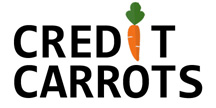One of the great things about living in Canada is that the provincial governments cover all of the medical costs that are deemed “necessary”. The downside is that common things like vision, dental, and most therapy treatments such as psychology and physiotherapy are not covered.
That’s where extended health benefits come in. We’re going to take a look at what extended health benefits are, how you can get extended health benefits, and how you can maximize the value from your plan.
What Are Extended Health Benefits?
Extended Health Care (EHC) is essentially an insurance policy that supplements your provincial health care plan.
What does extended health care cover? It depends on your plan, but usually offers coverage for things such as vision care, prescription drugs, dental, and travel insurance.
The more comprehensive plans will also include things such as massage, chiropractic treatment, physiotherapy, osteopath, naturopath, acupuncture, life and disability, and orthodontics among many other nice-to-have services.
How do You Get Extended Health Coverage?
Most people get their extended health coverage through their employer. The employer may cover the full cost of the plans, or they might make the employee opt-in and pay only a portion of it.
If you’re not working, then you can also buy a plan on your own. Of course, this will be more expensive when compared with a plan through your employer since they get bulk discounting.
When searching for a plan on your own, we recommend checking if any of the associations you belong to (eg. university alumni, professional engineers, HR professional, AMA etc.) have a discounted plan available.
How to Maximize Your Extended Health Benefits
This is all about knowing your plan inside and out. The best way to get all of the details is to get your benefits booklet from the insurance provider. Most providers such as Blue Cross, Sun Life, and Manulife will provide a customized booklet that details exactly what your benefits are.
When using your benefits, don’t count on the service provider such as a pharmacy or psychologist to know what your benefits are.
We’ve encountered multiple situations where the service provider submitted the claim and was denied by the insurance company. Since we knew our plan like the back of our hand, we got on the phone with the insurance company right away and they were able to fix it and approve the payment.
When reviewing your benefits booklet, here are the key things to watch out for:
1. Know the dollar amounts for each extended health category. For example, do you have $500 for massage, $500 for a chiropractor, and $500 for a nutritionist? Or do you have $1500 that you can use in whatever category you would like?
2. Know when the benefits reset. For things like the dental and vision, it is common to have a cap on the allowable spend. This cap usually resets every 12 or 24 months. Make sure you don’t let a claim period go by without maximizing your cap!
3. Look for the exclusions and caveats. As an example, physiotherapy might be covered under your plan, but you might need a doctor’s referral in order for that coverage to be valid. Make sure you have all of your required documentation and referral in place before incurring the medical expense.
4. Maximize the best of each extended health care plan if you have multiple coverages. If you and your partner are both working, then chances are both of you are covered by two extended health care plans (your own + your partner’s if they’ve added you). Make sure you take a look at both plans so that you can choose the available options wisely. As an example, if your health care plan already covers 100% for prescription drugs, and your partner’s plan has an option to opt-out of prescription drug coverage to have more dollars for massages, then you should be maximizing the dollars for massages on your partner’s plan.
One final tip when using your benefits. You should submit your own claims whenever possible. Lots of places will have “direct billing” where they charge the insurance company directly so that you don’t have to do anything. We would recommend paying upfront and submitting the claim yourself. The reason is that this allows you to pay with a credit card and earn some cash back or points – which usually works out to you getting around 2% back.











Leave a Comment